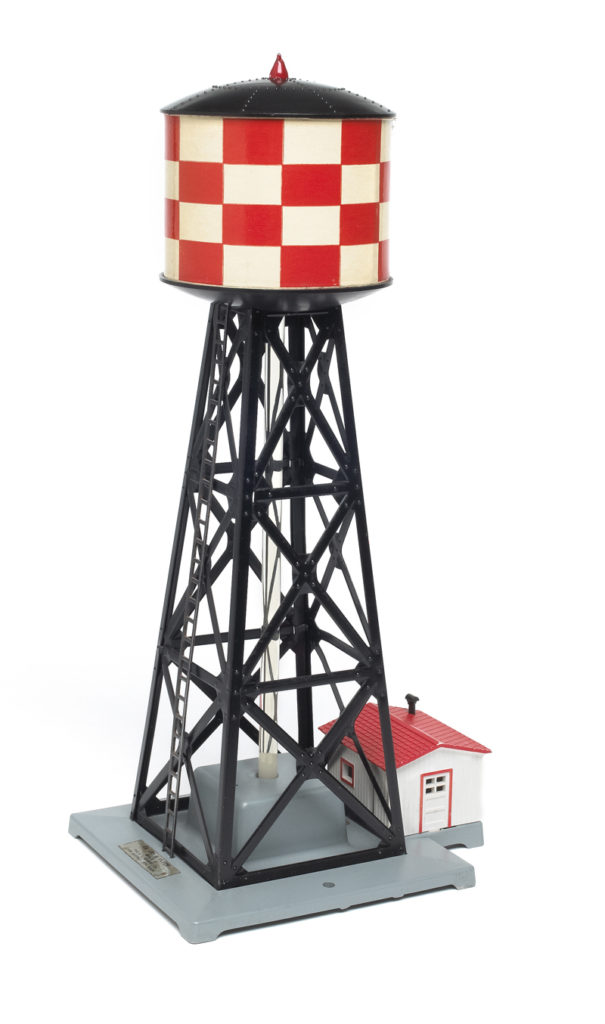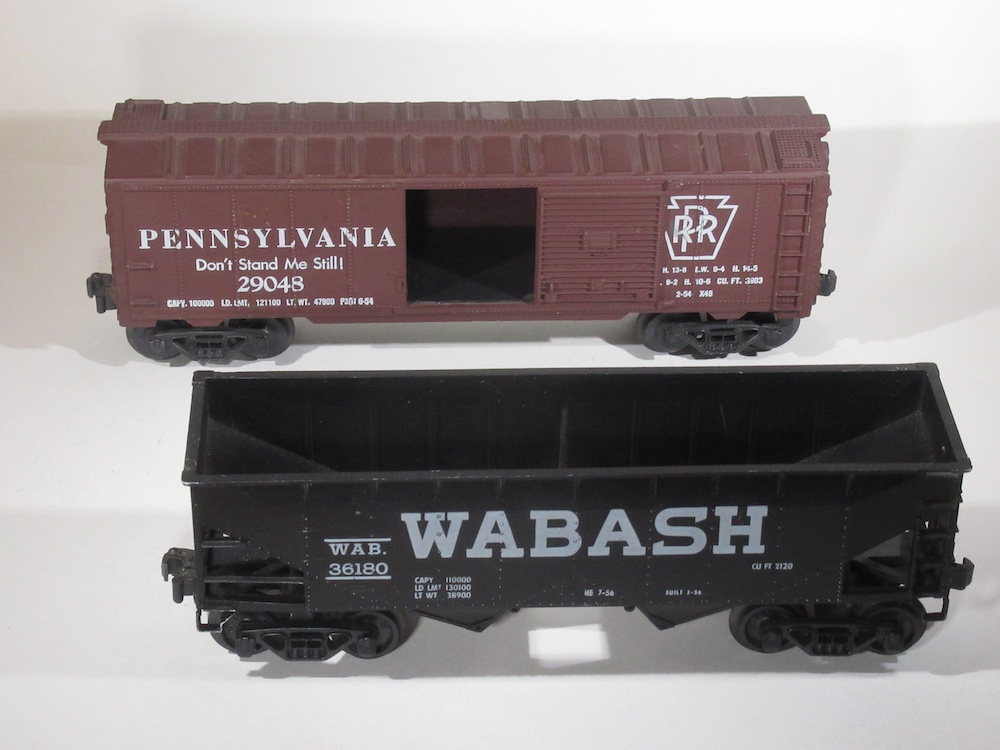Toy train firms selling miniature versions of steam locomotives knew the full-size versions of those models needed to fill their boilers with cool water on a regular basis so their firebox could heat the water until it boiled. Then it could produce steam to move the rods and pistons that kept the drive wheels moving. No wonder water towers were seen in every yard and near depots throughout the 19th century and the first half of the 20th century.
During the prewar era, kids didn’t have much to choose from when it came to water tanks. The best came from Ives and American Flyer, models that had sheet-metal cylinders on supports, with everything brightly painted. Lionel added a smaller and less impressive tower in 1931 (No. 93), which it cataloged for the rest of the prewar period.
Gilbert saw an opportunity to leap ahead when, in 1940, it introduced the No. 596, a large and realistic model of a water tank with a spout that could be lowered by pressing a button on a controller. That accessory returned to the Flyer line after the war and remained in it through 1958.Lionel felt a need to respond, particularly because the 596 did not look out of place on an O gauge layout. Out came the No. 30 in 1946. An operating version also made its debut, but it did not function well; leaks caused Lionel to delete the No. 38 after 1947. Meanwhile, the 30 continued to fill out the line through 1950.
Gilbert wants something different
The half-century mark took on important meaning for Gilbert, which pledged to bring out “50 new items in 1950.” Why not another, more modern water tower? One looking like the tall, graceful structures found on industrial sites. This was smart because, as railroads adopted diesel locomotives, the old squat towers became obsolete and in need of demolition.
 Gilbert, seeking to offer a sleek, tall tower, bought the design of the No. 108 water tower the Colber Corp. had brought out in 1950, plus an ample supply of those accessories. The red-and-gray model had a clear plastic tube containing a special liquid that, when heated by a transformer, would bubble. (Learn more about Colber accessories in this video.)
Gilbert, seeking to offer a sleek, tall tower, bought the design of the No. 108 water tower the Colber Corp. had brought out in 1950, plus an ample supply of those accessories. The red-and-gray model had a clear plastic tube containing a special liquid that, when heated by a transformer, would bubble. (Learn more about Colber accessories in this video.)
And so the 772 water tower entered the Flyer line in 1950 and remained a popular and inexpensive item through 1952. Then Gilbert designers modified the tank in a way that created something distinctive. They adopted a sheet-metal base and installed a shack there (one borrowed from the No. 758 Sam the Semaphore). The support structure and bubbling tube stayed; however, the tank changed.
In place of the thin red plastic tank Colber had bequeathed to Gilbert, the designers opted for a “fatter” tank that they decorated with a red-and-white pattern of squares. This “checkerboard” scheme caught the fancy of S gaugers, who made the 772 a solid draw. O gauge modelers liked it, too, and added it to their layouts.
The checkerboard water tower became emblematic of the Flyer line. It underwent further changes, and it was renumbered as the 23772 in 1957. That model, shown here, exchanged a sheet-metal base for a gray plastic one. The sheet-metal shack was replaced by a white plastic one with a red roof.
After six more years, the final water tower made for the American Flyer line faded away after 1964, though not without leaving memories in the minds of millions of toy train enthusiasts.
The A.C. Gilbert Co. cataloged the “checkerboard” water tower between 1953 and 1964.
Buyer’s checklist:
- Cracked or scratched base?
- Original metal or plastic shack?
- Damaged or replaced tank?
- Missing or bent ladder?
- Functioning original bubbling mechanism?
- Broken plastic tube with liquid?













